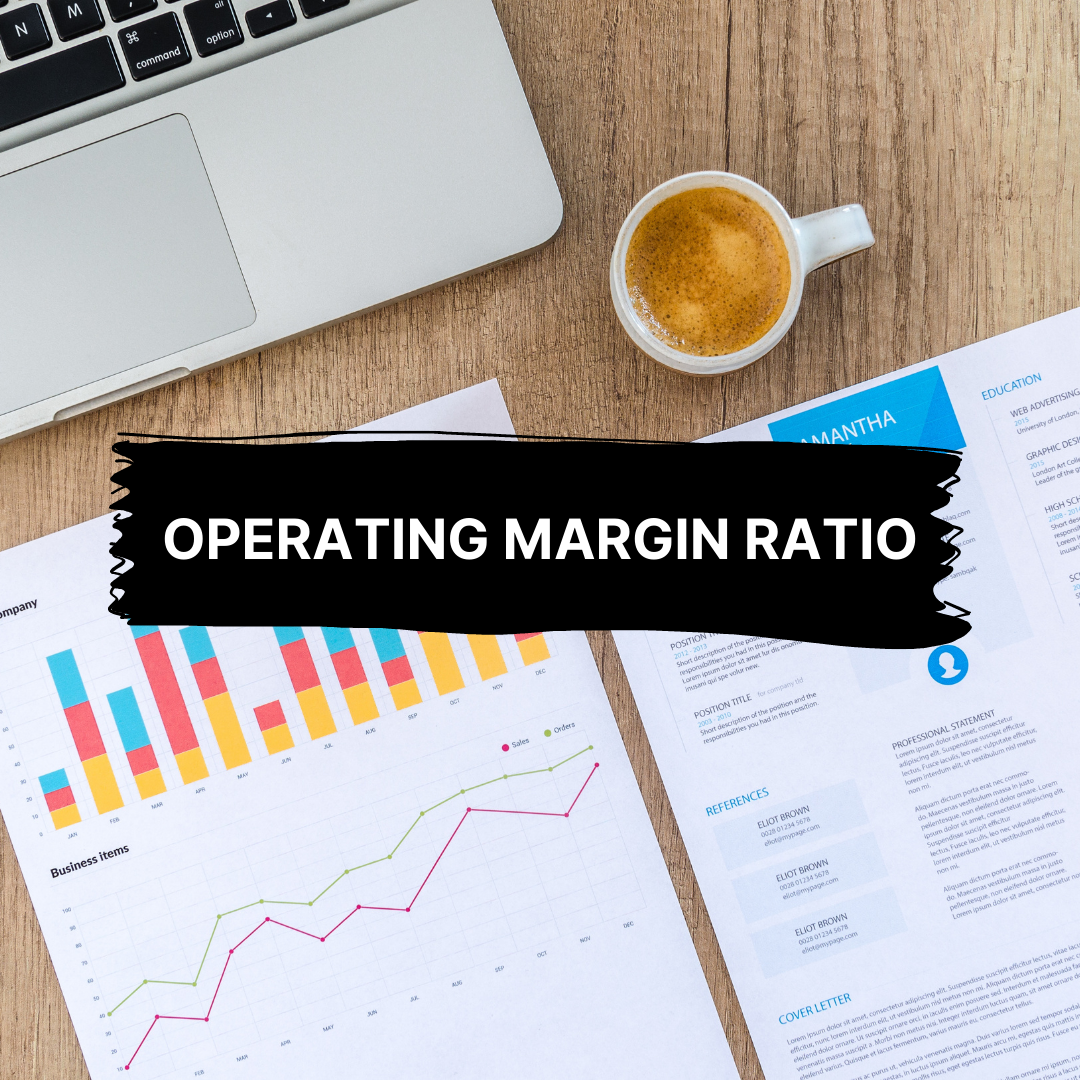Do you own a firm or a business? How do you assess the profits & losses, success & failure of your company? Get answers to all your queries related to your firm and its financial aspects. Keep going!
Managing a firm, organization, or business may be difficult. To ensure success, in addition to the day-to-day tasks of operating the business, it's critical to analyse performance on a frequent basis. Evaluating the organization's financial and operational status to identify strengths and weaknesses assists leadership in determining where improvements or adjustments can be made.
The good news is that financial ratios make it simple to obtain information about a company's success. Financial ratios use information from the financial statement to assess the efficacy of performance in major areas.
Benefits of Financial Ratios
Financial ratios are important tools for analyzing quantitative aspects of a company. Certain ratios may be used to assess both short-term and long-term financial and operational progress, making them beneficial for recognizing company patterns and indicating when it's time to make an adjustment.
A company can measure itself against similar firms and determine its strengths, weaknesses, threats, and opportunities by examining specific ratios.
Common Types of Ratios
Following are some common types of ratios that can be helpful in your quarterly or half-yearly assessment for your organization or business.
Liquidity Ratio
These ratios are used to determine a company's capacity to handle short-term financial responsibilities, such as debt. The ratio is computed by comparing a company's liquid assets (those that can quickly be converted to cash) to its present short-term liabilities.
Some common liquidity ratios are quick ratio, current ratio, cash ratio, capital ratio.
Leverage Ratio
Leverage ratios are used to determine a company's long-term viability. Their principal function is to identify a company's capacity to satisfy long-term financial obligations by indicating how much capital originates from debt, such as loans and credit.
Some common leverage ratios are a debt to equity, total debt to capitalization ratio.
Profitability Ratio
Profitability ratios show how well a corporation can create profits relative to its costs over a specific time period. The ratios show how well a corporation uses its assets to produce a profit.
Some common profitability ratio return on equity, operating margin ratio.
Asset Management Ratio
Asset management ratios are used to assess how well an organization uses its assets to generate revenue.
Some common asset management ratios are total assets turnover, receivables turnover.
One such financial ratio is the “Operating Margin” Ratio. Let’s find out what it is? How to calculate it? Other profit margins to consider. Importance & drawbacks of Operating Margin in a business.
Operating margin, or operating profit margin, is a percentage that represents the relationship between a company's operating income and its return on sales.
It is basically a financial metric that focuses on an intermediate stage in the financial statement and may be used to determine how profitable a company is by focusing on its key elements.
Operating profit margin emphasizes on indirect company expenditures such as administrative costs, wages, marketing costs, and depreciation charges. Whereas gross profit margin, operating profit margin, and net profit margin, all assess the business operations.
Overview: Operating Margin
Operating margin is just operating income divided by revenue. The operating margin of a company is a profitability ratio that measures revenue after all operating and non-operating expenditures have been paid. The operating income, also known as return on sales, shows how much of the produced revenue is left after all operating expenditures have been paid.
In layman's terms, operating margin determines a company's profitability by assessing how much of each sales revenue is retained over after specific expenses are deducted.
Analyzing the Operating Margin in Depth
The operating margin of a firm, also known as return on sales (ROS), is a strong measure of how effectively it is managed and efficient at creating profits from sales. Investors and lenders pay special attention to it because it reveals the percentage of revenues available to support non-operating expenditures such as paying interest.
Operating margins that are very dynamic are a leading sign of company risk. Looking at a company's previous operating margins, on the other hand, is an excellent approach to see if its performance is improving. Better managerial controls, more effective resource utilization, smarter pricing, and more effective marketing can all help to increase the operating margin.
The operating margin is simply the profit a firm produces from its main business as a percentage of total revenues. This enables investors to determine if a company's revenue is derived mostly from its core business or from other sources, such as investment.
Example:
In the example above, you can see how to calculate this company's 2020 operating margin. 2020 begins with Rs.50,00,000 in revenue, less Rs.32,50,000 in COGS, for a gross profit of Rs.17,50,000.
After deducting an additional Rs.13,12,500 in Selling, General, and Administrative (SG&A) expenditures, Operating Income comes to Rs.4,37,500.
By dividing Rs.4,37,500 by Rs.50,00,000, you get an operating margin of 8.8%.
A simple formula to represent this whole ratio is given below:
Let’s understand this formula in depth.
What is Operating Income?
After all operational expenses are removed from sales receipts or revenue, operating income is the profit of a firm. It shows how much money a firm makes from its primary operations, excluding any additional sources of income that aren't directly tied to its main business activity. It is distinct from net income in that it excludes tax and interest expenditures.
Before considering non-operating factors, this offers investors and creditors a clear idea of whether a company's main activity is successful or not.
What is Revenue?
The financial amount collected by selling products and services to business customers, minus any products returned and allowances/discounts granted to clients, is known as sales revenue or net sales. This can be accomplished through cash or credit sales.
What are Some Other Profit Margins to Consider?
Operating profit margins are calculated by comparing EBIT to sales to determine how proficient a company's management has been in generating revenue from its operations. Businesses and analysts can use various margin calculations to acquire numerous insights into a company's profitability.
The gross margin indicates how much profit a business earns on its cost of goods sold (COGS). To put it another way, it shows how well management employs labour and resources in the manufacturing process.
The net margin accounts for all expenses and accounting factors, including taxes and depreciation, when calculating net earnings from all divisions of a firm. To put it differently, this ratio compares net income to sales. It comes as near as possible to encapsulate the effectiveness of a company's management in a single number.
Importance of Operating Margin in Business
For prospective investors and present creditors, a firm that is capable of generating operating profit rather than running at a loss is a favourable indicator. This implies that the company's operating margin generates value for shareholders while also allowing lenders to continue servicing their loans. In comparison to having a lower ratio, which indicates a smaller profit margin, a firm with a larger margin has less financial risk.
Operating margins have been steadily increasing over time, indicating that profitability is rising. This might be due to more effective cost control or other variables that drive revenue growth, such as greater pricing, better marketing, and more client demand.
Disadvantages of Focusing on Operating Margins and Profits
Operating profit is an accounting measure, not a reflection of financial value or cash flow. Depreciation and obsolescence, stock-based compensation, and other non-cash expenditures are included in profit. It excludes capital expenditures and changes in working capital, on the other hand.
When these numerous elements are combined, cash flow (the ultimate generator of value for a corporation) might be much different (greater or lower) than operating profit.
What the Operating Margin Does Not Reveal?
Understanding your operating margin is useful, but it does not account for all of a company's expenses. Interest income and costs, for example, are not included in operational income but are included in operating cash flow.
In addition, elements of revenue or loss from foreign exchange impacts are removed from the income statement lower down. Operating income often excludes one-time restructuring, impairment, and other charges, as well as income tax expenditures.
Nonetheless, understanding your operating margin serves two purposes:
- When you compare operating margins for the same firm across two time periods, you can see if there has been any progress or loss in maximizing the profit.
- Comparing the operating margins of firms in the same sector might help you figure out which one takes advantage of the opportunities effectively.
Although the operating margin is a basic notion, it contains a great deal of information. Operating margins can be useful since they encourage you to examine more closely at your financial statements, particularly your income statement.
What Can Businesses Do to Increase Their Operating Margin?
When a company's operating margin surpasses the average rate of the industry, it is considered to have a competitive advantage, implying that it is more successful than similar businesses. While the typical margin varies by industry, firms can gain a competitive edge by boosting sales or cutting expenses—or both—in general.
Increasing sales, on the other hand, frequently necessitate spending more money, resulting in higher expenditures. Cutting too many expenses can result in unfavorable results, such as the loss of qualified labour, the use of poorer materials, or other quality losses. Sales may suffer as a result of reduced advertising spending.
For many businesses, growth is the greatest choice for lowering production costs without losing quality. The concept of economies of scale refers to the belief that larger businesses are more lucrative. The greater manufacturing capacity of a large company lowers the cost of each item in various ways. Wholesalers, for example, frequently provide discounts on large purchases of raw materials.
What Is the Difference Between Operating Margin and Other Profit Margin Measures?
All running costs are included in the operating margin, while non-operating costs are excluded. The most thorough and conservative metric of profitability is net profit margin, which takes into account all expenditures associated with a transaction.
On the other hand, gross margin focuses solely on the cost of goods sold (COGS) and overlooks overhead, fixed costs, interest charges, and taxes.
Which Industries Have Higher and Lower Operating Margin?
Services industries often have higher operating margins than production lines since there are fewer assets engaged in manufacturing. Similarly, software or gaming businesses may invest early when building a product and then profit handsomely afterwards by selling millions of copies at a low cost.
Luxury items and high-end accessories, on the other hand, frequently function on the basis of great profit potential and low sales.
Transportation companies, for example, have lower operating margins because they must deal with shifting fuel prices, driver benefits and retention, and vehicle upkeep. Weather volatility, large inventory, operational overheads, the need for agricultural and storage space, and resource-intensive operations all contribute to reduced margins in agriculture-based businesses.
Automobiles also have poor profit margins, since the severe competition, unpredictable customer demand, and substantial operational expenditures associated with creating dealership networks and logistics limit revenues and sales.
How to Improve Your Operating Margin?
Profitability may be improved through increasing income, lowering costs and expenses, or a combination of the two. Here are a few pointers to help you get to your optimum profit margin:
- Reduce your total operating costs: Operating costs may include things like office space and utilities, equipment, supplies, salary and benefits, employee expenditures, insurance, machinery repair, shipping, and company software. Negotiate cheaper pricing, downgrade, or delete any services that aren't essential.
- Cut low-margin products or services and replace them with higher-margin ones: You may do a break-even analysis to see if a product is genuinely lucrative. You can get ideas from other firms in your area or conduct research on high-margin items in your field. In any event, you'll have to measure your intended selling price against your cost of goods sold and operational expenditures.
- Play with your pricing strategy: Experiment with multiple product pricing approaches, such as value-based pricing or cost-plus pricing, to fine-tune your price strategy. The influence of product pricing on demand may amaze you.
- Develop brand loyalty: Engaging with consumers on a regular basis and expressing gratitude has a measurable impact on sales and customer retention. You may lower your advertising expenditures by retaining more clients.
Key Takeaways
- To measure the company’s success, you can take the help of the financial ratios. These ratios help in assessing the quantitative aspects of the company.
- Liquidity, leverage, profitability, and asset management ratio are some common types of financial ratios.
- Operating margin is a profitability ratio that is calculated after all the operating and non-operating expenditures have been paid.
- Operating margin is basically operating income divided by revenue.
- Operating margin plays a crucial role in a business, as it indicates the capability of a firm to generate profit for its shareholders.
- By increasing the sales, cutting down the expense, choosing the production method with optimum cost can be helpful in increasing the operating margin of a firm
Related Articles










